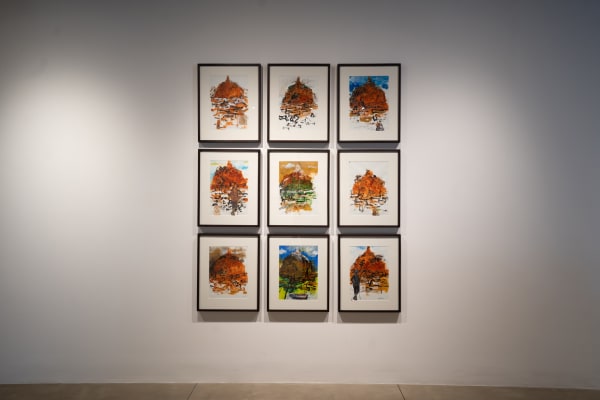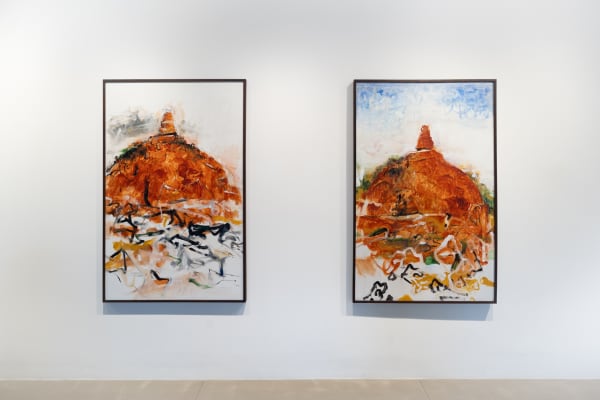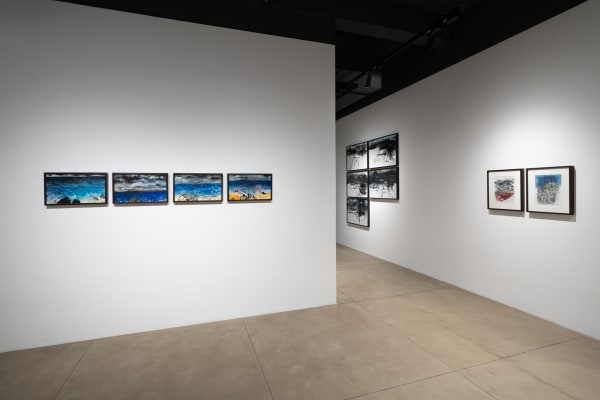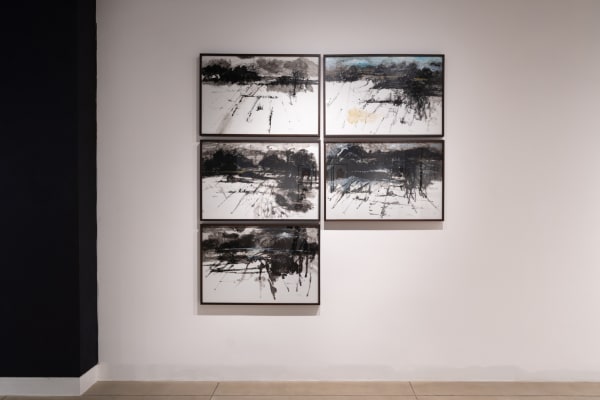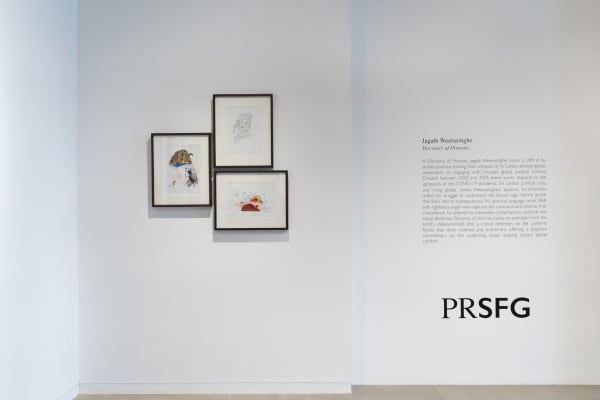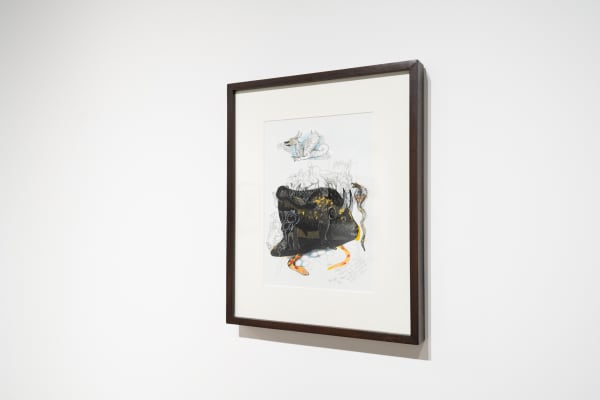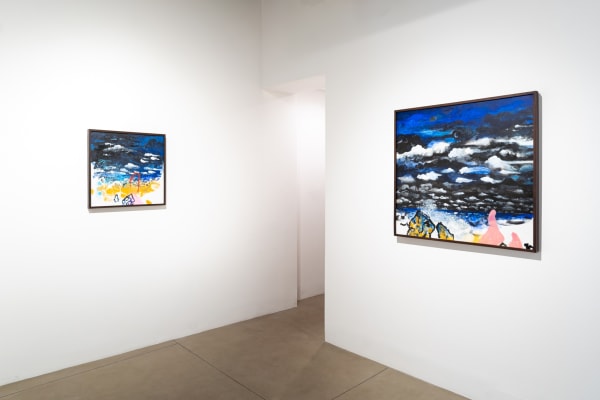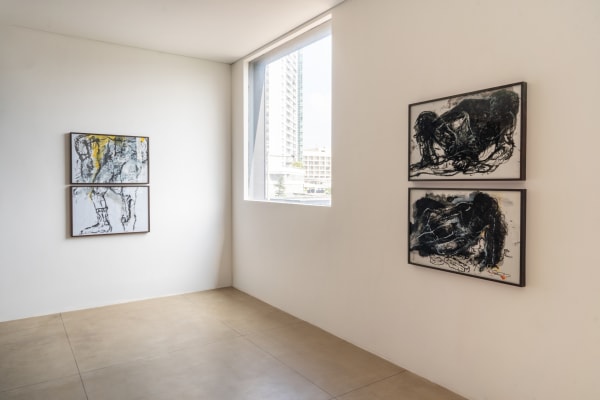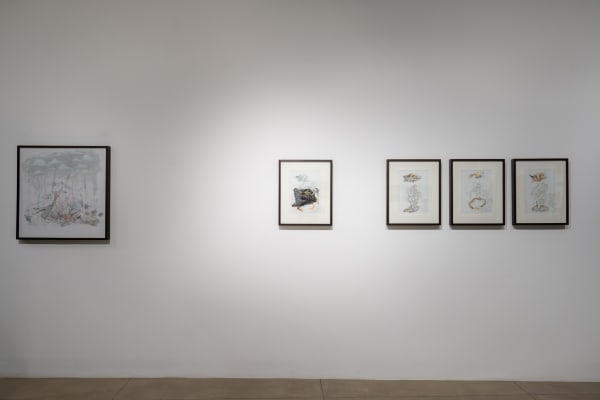Discovery Of Histories: Jagath Weerasinghe
In Discovery of Histories, Jagath Weerasinghe presents a gradual yet profound shift in his artistic practice, which spans over four decades. Shifting from his earlier critique of the ethnolinguistic nationalism that fueled decades of violence in Sri Lanka, the works in this exhibition engage with the wider, increasingly fragmented political landscape of the world. Created between 2020 and 2024, these new works reflect the deep social and political upheavals brought on by the COVID-19 pandemic and political turmoil in Sri Lanka, alongside growing global unrest. Weerasinghe’s gestural brushstrokes, sporadic and charged with energy, mirror his attempt to grasp the bewildering and flawed logic behind global liberalism and its repercussions. Through these works, he explores how systemic injustices have created an escalating wave of violence and suffering for innocent people worldwide.
The series Under the Dark Sky poignantly captures the uncertain and unsettling atmosphere that emerged in the wake of the pandemic. The works in this series reflect not only the social and economic upheavals caused by COVID-19, but also other globally destabilizing forces; the political uprising in Sri Lanka during the economic crisis and the war in Gaza. The sombre palette and discordant brushstrokes essays a pervasive sense of anxiety and discord, as the artist grapples with the turmoil of the past decade. Weerasinghe not only contends with the reckoning that has emerged in the face of mass suffering but also notes the possibility for optimism and change driven by collective action. The series imagines a future in which the people’s struggle causes disruption to the status quo, disrupting existing power structures.
In Discovery of Histories, Weerasinghe revisits the motif of the ‘ruined’ stupa, which has been a recurrent motif throughout his practice. In earlier series, the stupa represented the artist's disillusionment with the way Buddhism’s peaceful teachings were often appropriated to justify violence. In Discovery of Histories: Ruined Stupa, however, Weerasinghe reimagines the stupa as a symbol of optimism and strength. He represents the stupa as a relic rising tall against the sky, its ancient form a testament to the passage of time and the possibility of a new beginning. This reimagined stupa serves as an emblem of possibility, calling for a rethinking of historical trajectories and the construction of a new political order in Sri Lanka—one that transcends ethnic divisions and attempts to reconcile the lingering scars of the past. Thus Discovery of Histories: Explorers Have Eyes and Guns, with its colonial figures standing against the ruins is a call to rethink histories and build new trajectories. The artist Weerasinghe asserts the need to take control of our narratives, and assert our enduring presence within it- while rethinking our histories.
Weerasinghe’s works are deeply autobiographical, often positioning himself as both a helpless bystander who passively observes the unfolding chaos and the victim within a flawed system that mobilises religious fervour and rhetoric to perpetuate violence. The artist evokes the image of the bull, referenced in Pablo Picasso's work, to draw stark parallels between the historical and contemporary climates of political carnage. The bull, ensnared between the proverbial dragon and snakes, becomes a poignant symbol of the struggle of the masses, caught in the crossfire of competing forces beyond their control. Through this powerful imagery, Weerasinghe highlights the enduring and tragic intersection of power, religion, and violence.
While the artist's early works were marked by an inability to comprehend the brutal violence and bloodshed that defined Sri Lanka’s post-independence landscape and the guilt of witnessing ethno-nationalist violence unfold, Discovery of Histories shifts focus to the underlying forces that drive such violence. The artist’s gestural language, once dominated by youthful anger and righteous frustration, now captures the disarray and confusion that has characterised his attempt to rationalise the seemingly irreconcilable political and social dilemmas. His works no longer merely reflect disillusionment but evolve into an observation of the systemic issues that perpetuate extremism and violence, offering a critical view of the forces shaping contemporary global conflicts.

